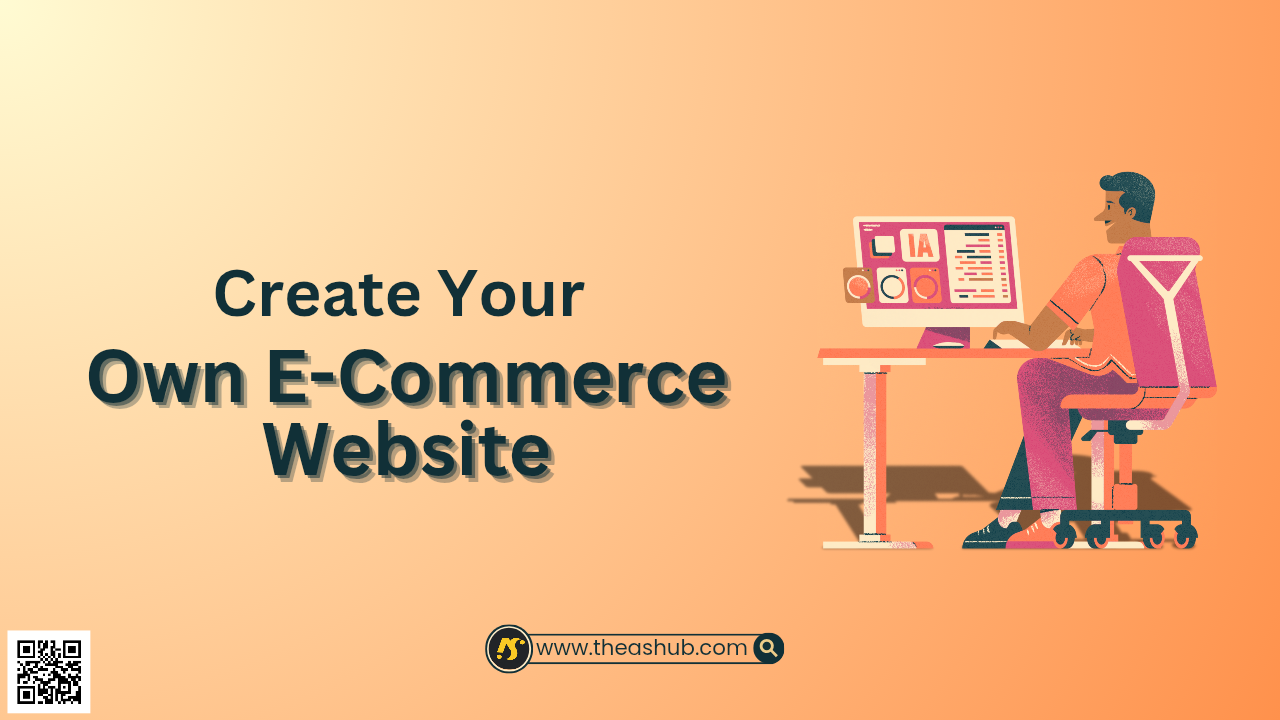Hey learners,
In today's digital world, it's never been easier to open an online store. The growing fashion and garment business provides numerous opportunities for aspiring entrepreneurs. This guide will help you through the process of developing your own e-commerce website, drawing on personal experiences and insights to ensure you have all of the resources you need to succeed.
How to Create Your Own E-Commerce Website Easily and Quickly?

{tocify} $title={Table of Contents}
The Growth of the Fashion Industry
The fashion and clothing industry in India has seen remarkable growth. In 2017, its value was just $2.92 million, but it has skyrocketed to $4.68 billion today. Experts predict it could reach $24.35 billion by 2029. This growth is evident with the appearance of various clothing brands on platforms like Shark Tank, where startups like Snitch have achieved valuations of up to ₹500 crores. Notably, brands like The Sold Store and Bunkers Corner started as small ventures but now generate revenues in the crores.
Getting Started: Your E-Commerce Journey
Before diving into the technical aspects of building a website, remember that anyone can enter this business. Don't be intimidated by established players. The beauty of e-commerce is that there are no entry barriers. To start, you'll need three essential components:
- Vendor: This is where you'll source your products.
- E-Commerce Store: This is your platform to sell the products.
- Social Media: Platforms like Instagram can help you market your products effectively.
If you need help finding vendors or setting up a social media page, let me know in the comments, and I can create a detailed video for you on that in the next two to three weeks.
Personal Experience in E-Commerce
I launched my own e-commerce brand that focused on minimalist fashion. While I had to shut it down due to a non-compete agreement with my previous employer, I gained invaluable experience over the year and a half I operated it. I explored various vendors and platforms, and I'm excited to share these insights with you.
Building Your E-Commerce Website with Odoo
Today, we will use Odoo to create our e-commerce website. Odoo is an ERP (Enterprise Resource Planning) software that offers numerous apps tailored to meet every business need, from crafting an online store to managing inventory and invoicing. The best part? You can build a fully functional e-commerce website in just 10 minutes.
Why Choose Odoo?
Odoo stands out because it allows you to create a website without spending thousands or waiting weeks. Their first app is free, making it accessible for everyone. Additionally, you receive a custom domain name free for the first year, unlimited free hosting, and lifetime customer support.
Step-by-Step Guide to Creating Your E-Commerce Website
Here's how to get started:
1. Visit (https://www.odoo.com) and click on "Start Now - It's Free."
2. Select the e-commerce application from the list of available apps.
3. Fill in your details as prompted. It’s straightforward and user-friendly.
4. Choose your business type. For our example, we’ll select "Online Store" and specify "Clothing" as the category.
5. Define your primary objective: whether it's to generate leads, develop your brand, or sell more products. For this guide, we’ll focus on selling more.
6. Select a colour palette that you feel represents your brand identity. This is crucial as it will influence how customers perceive your brand.
7. Choose the pages you want on your website, such as "About Us," "Pricing," and "Privacy Policy." You can also integrate features like live chat for customer queries.
8. Click on "Build My Website" and choose a theme that fits your vision.
Customizing Your Website
Once you have the framework, you can customize it to your liking. Odoo allows you to drag and drop elements to create a premium feel. You can edit text, change colours, and even add images from their stock library.
Adding Products
Adding products is a breeze. Here’s how:
1. Click on "New" and then select "Product."
2. Enter the product details, including the name, price, and a brief description.
3. Upload an image for the product. Odoo allows you to choose from stock images or upload your own.
4. For products with variants (like different sizes or colours), you can easily add these options in the product settings.
Enabling Wishlist and Comparison Tools
Enhancing customer experience can lead to increased sales. To enable wishlist and comparison tools:
1. Go to "Settings" and then to "Website."
2. Enable the comparison tool and wishlist feature.
3. Save your changes and return to your product page to see these features in action.
Payment Gateway Integration
To ensure customers can make purchases seamlessly, you'll need to set up a payment gateway:
1. Go to the checkout process and fill in the details as prompted.
2. If you don’t see a suitable payment option, click on "View Alternatives" to install Razorpay or another payment provider.
3. Once installed, you can test the payment process using test mode before going live.
Tracking Your Website's Performance
Analytics is crucial for any business. Odoo provides a comprehensive dashboard where you can track:
- Monthly sales and orders.
- Top-selling products and categories.
- Customer engagement metrics.
This data helps you make informed decisions about your business and marketing strategies.
Publishing Your Website
Once everything is set up, it’s time to publish your website. Simply click the "Publish" button, and your e-commerce store will be live for customers to browse and shop.
Final Thoughts
Creating your own e-commerce website is an achievable goal, and with Odoo, the process is simplified. I encourage you to try building your website alongside this guide. Don't procrastinate; take the leap and start your online business today!
